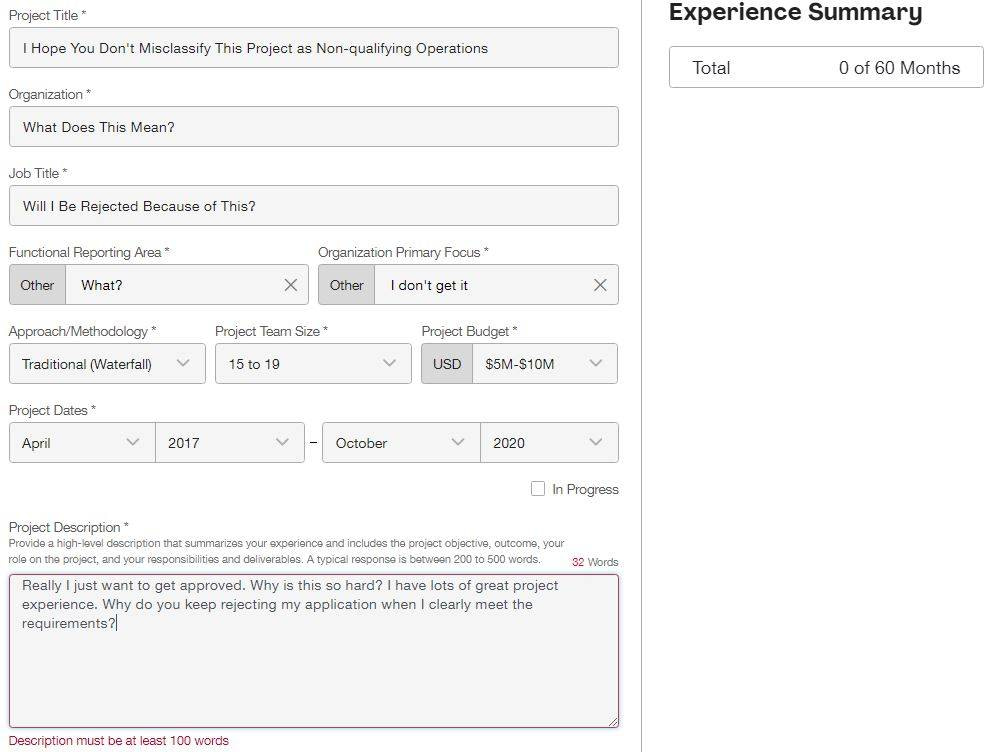Why Using Examples of PMP Applications Can Get You Rejected

Can I get an example of a successful PMP Application?
No! I don’t want you to waste time copying something that might have worked in the past but will most likely leave you feeling frustrated and rejected. Instead of getting outdated advice from what might have worked for a few people before, it’s much better to learn from all the people who have recently had their PMP application rejected.
You may have seen examples of what to write in your PMP application description on the websites of PMP Exam Prep Instructors. They will suggest using things like:
IN: Created the Project Charter.
PL: Developed a Work Breakdown Structure.
Of course, there are many PMP Education Providers out there that would like you to think that creating your PMP application is easy and you can just follow their template and throw in some words from PMBOK. But PMP instructors don’t have to deal with the hassles when someone has their PMP application rejected. In fact, our favorite PMP exam study company recently posted that failing the PMP audit is nothing to worry about and that some of their students have failed the audit multiple times! But don’t follow their advice if you value your time, money, and mental health.
Why is using a PMP application template or sample application a Bad Idea?
Because most of the time, it doesn’t work. One of the big reasons there is so much bad advice on what to put in your PMP application is something called “survivorship bias”. From Wikipedia, “survivorship bias is the logical error of concentrating on the people or things that made it past some selection process and overlooking those that did not, typically because of their lack of visibility. This can lead to false conclusions in several different ways”.
Trying to mimic an existing PMP application example is a bad idea for several reasons:
- There are very subtle differences in what you should put in your application because of your unique mix of experiences;
- There are tons of little areas in the PMP application that can cause problems — just a few words can cause the PMI reviewer to decide the experience doesn’t qualify;
- Some people get lucky and have their weak applications slip through the cracks;
- PMI changes its review practices frequently;
- Most people only know what might have worked for them but not what has caused problems for a lot of other people.
You should know that the PMP application review process is designed to weed out poor-quality applications. This includes applicants where the documented experience is vague, difficult to understand, plagiarized, or poorly written or where the project experience appears to be administrative or operational, among other problems.
So instead of copying what might have worked for someone else, you need to focus on avoiding the things that didn’t work out for all the rejected applications that you won’t hear about. And because you often won’t hear about these rejected applications (remember survivorship bias?) and the people selling PMP training and education don’t have enough experience with rejected PMP applications, we’ve developed several online tools to help you avoid problems with your application.

